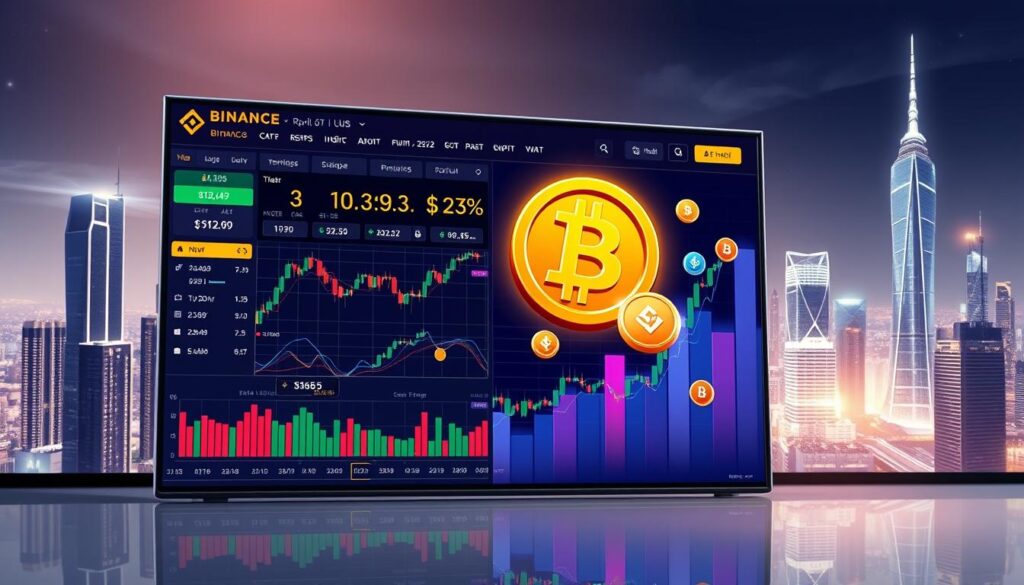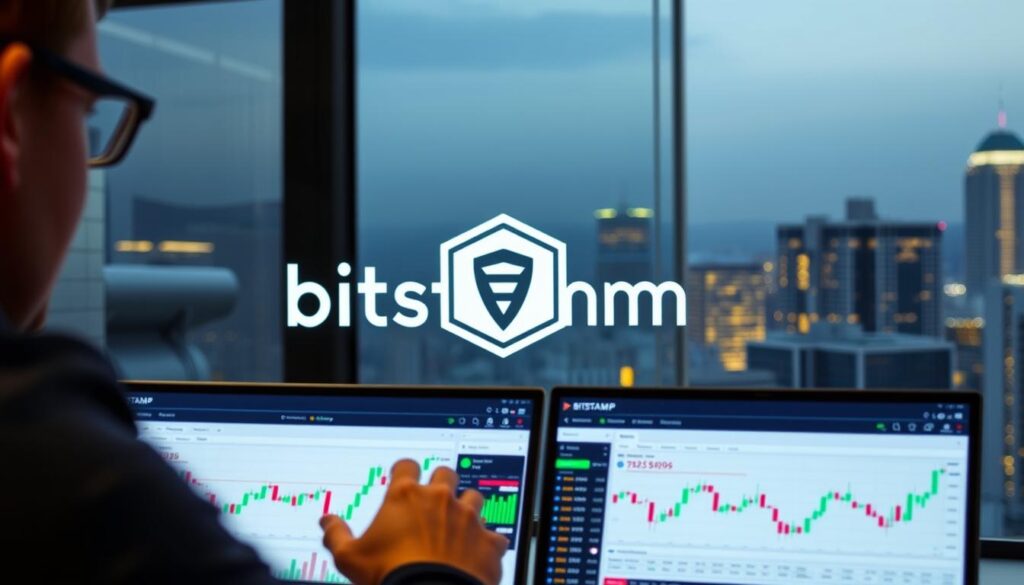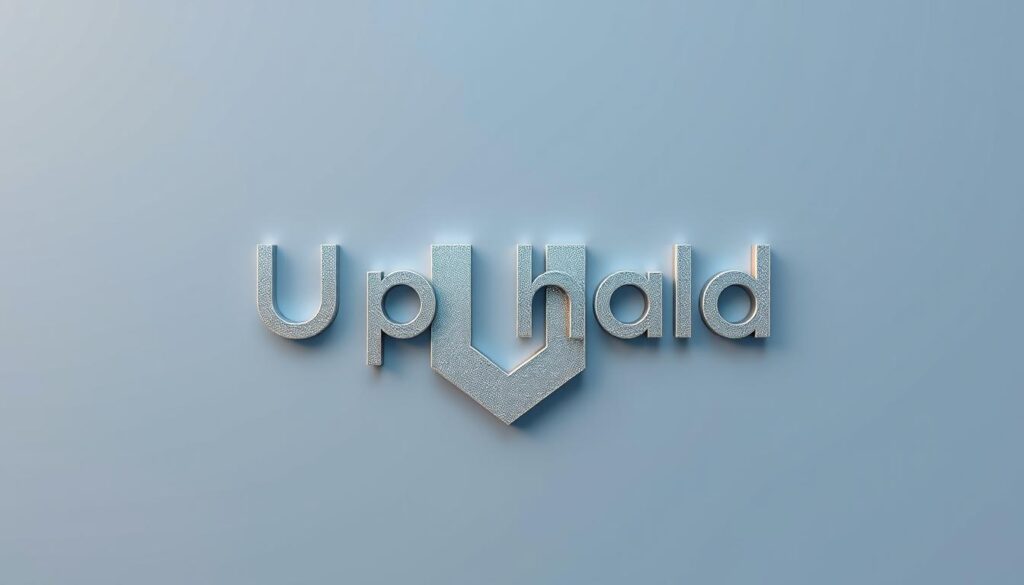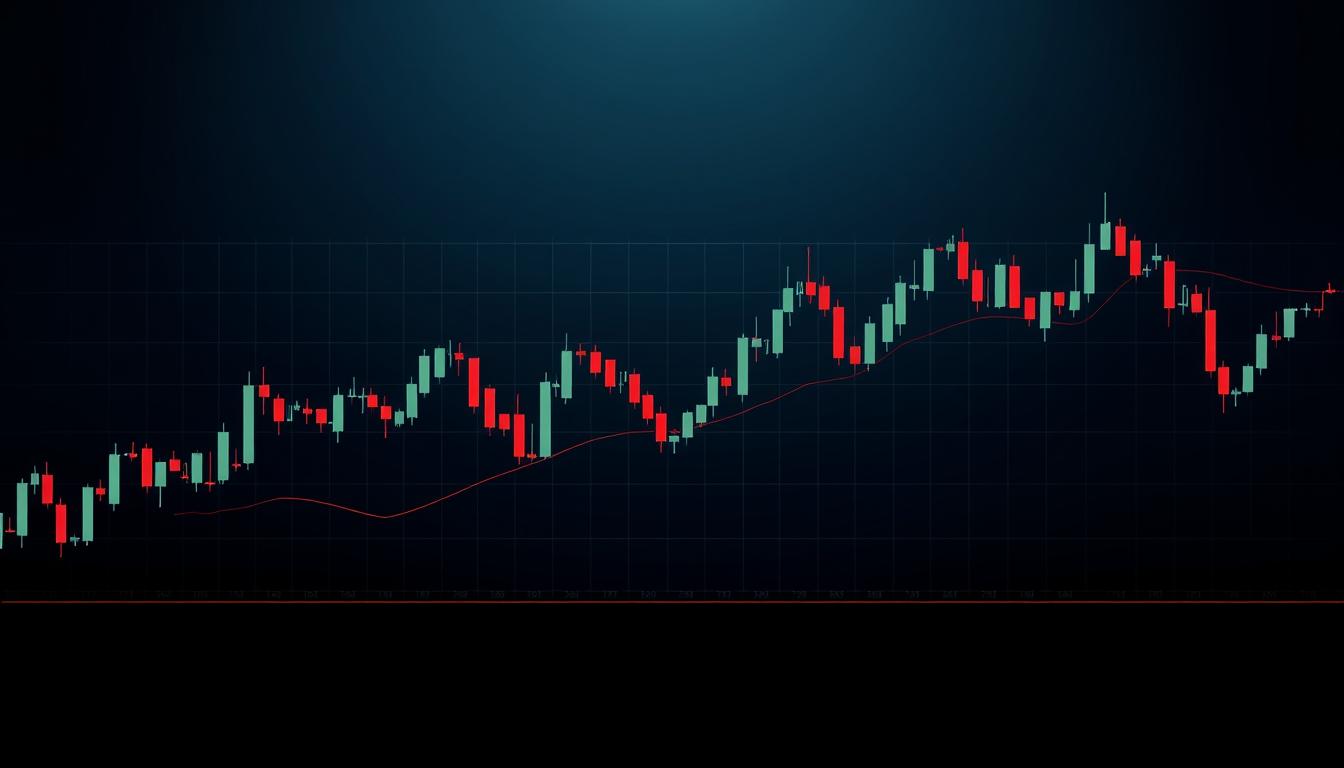Now Reading: Best Cryptocurrency Exchanges for Beginners in United States
- 01
Best Cryptocurrency Exchanges for Beginners in United States
Best Cryptocurrency Exchanges for Beginners in United States

Entering the U.S. crypto market in 2025 feels less risky than before. Clearer rules and better compliance make it easier to pick a centralized platform and start trading with confidence.
This guide explains what makes an exchange truly beginner-friendly: a simple app interface, transparent fees, strong security, and quick account setup. We compare ten major names — Coinbase, Kraken, Binance.US, Gemini, Robinhood, Crypto.com, Bitstamp, eToro, Uphold, and Swan — and note each platform’s standout features.
Expect a clear look at explicit trading fees versus hidden spreads, custody approaches, insured USD funds where offered, and common funding paths like ACH, card, or wire.
We aim to help new traders set small, safe goals, choose the right account type, and protect funds with cold storage and 2FA. This roundup focuses on centralized options; decentralized tools are outside its scope.
Key Takeaways
- 2025 rules make choosing a CEX easier and safer.
- Look for intuitive apps, clear fees, and strong security measures.
- Compare trading fees and hidden spreads to see total costs.
- Funding routes affect speed, cost, and convenience.
- Start small, use simple order types, and enable custody protections.
Why the U.S. crypto exchange market looks different today
New federal guidance in 2025 has reshaped how U.S. platforms operate and how everyday people access crypto. That shift reduced uncertainty and made centralized trading venues more predictable for new users.
From regulatory uncertainty to structured rules in 2025
Clearer regulations mean exchanges must follow tighter compliance and reporting expectations. That has encouraged routine audits, stronger cold‑storage thresholds, and clearer incident reporting.
Platforms now disclose custody practices and fund safeguards more consistently. This helps users compare services and avoid surprises during deposits or withdrawals.
What clearer regulations mean for first‑time crypto traders
Beginners benefit from simpler onboarding, more predictable fee schedules, and standardized KYC flows. Better dispute resolution and transparent communications reduce friction when issues arise.
- More visible fee and spread disclosures for easier cost comparison.
- Conservative asset vetting, so listed cryptocurrencies are reviewed more carefully.
- State or product differences still exist; check availability before signing up.
Note: This guide focuses on regulated, centralized options aimed at simplifying first trades. On‑chain tools for self‑custody are an alternative but sit outside this roundup’s scope.
How to choose a beginner‑friendly crypto exchange in the U.S.
Start with the parts you will use every day: the mobile app, the trading interface, and clear fee displays. A smooth signup and obvious confirmations reduce mistakes when you first deposit or place an order.
User experience and mobile app usability
Test the app on your phone. Check how long onboarding takes, whether menus are labeled clearly, and if order screens show pre‑trade fee estimates.
Look for:
- Fast KYC flow and simple deposit steps.
- Clear buy/sell buttons and default small order sizes.
- Accessible help and tutorial prompts for new users.
Security features and custody options
Security matters more than convenience. Choose platforms that offer 2FA, passkeys, address whitelisting, and a known cold‑storage policy.
Prefer exchanges that explain custody: insured USD wallets, hot wallet limits, and cold storage thresholds.
Fees, spreads, and hidden costs to watch
Compare maker/taker schedules versus spread pricing. Watch funding and withdrawal charges, network fees, and any retail convenience surcharges.
Assets, staking, and compliance
Confirm the platform lists the cryptocurrencies you want and whether staking is available in your state.
Also verify KYC rules, state access, and feature restrictions before you create an account.
- Service reliability and responsive support ease early trades.
- Sensible defaults and clear disclosures prevent surprises.
- Balance current needs with a platform that can grow with your skills.
Best cryptocurrency exchanges for beginners in United States
Editors picked platforms by budget and goals to help new users compare tradeoffs.
Top picks by use case:
- Lowest fees: Binance.US — low maker/taker schedules and some zero‑fee BTC/ETH pairs.
- Easiest onboarding: Coinbase — streamlined app and guided buys.
- Strongest security: Kraken and Gemini — robust custody, audits, and certifications.
- Mobile rewards: Crypto.com — app perks and a Visa card for everyday spending.
- Conservative listings: Bitstamp — steady, reliable asset list and clear policies.
Specialty picks: Robinhood for zero‑commission access (note spread costs), eToro for social trading and copy tools, Uphold to mix crypto with metals and fiat, and Swan for Bitcoin DCA plans.
Fee models and feature sets vary widely. New traders often save by using advanced trade screens, promo pairs, or maker orders.
Scope note: This guide evaluates centralized platforms available to U.S. users. Decentralized options and self‑custody tools are outside this roundup.
Quick reminders: Match an exchange to your budget, preferred assets, and appetite for features like staking or cards. Always verify state availability and any product limits before funding an account.
Coinbase: the mainstream choice for effortless onboarding
If you want an easy path to buy and hold crypto, Coinbase offers a polished, familiar interface that lowers friction for new accounts.

Two modes and beginner-friendly tools
Simple app vs Advanced: The basic app makes one‑tap buys easy. Coinbase Advanced unlocks richer order types and lower maker/taker pricing for active trading.
Learning and custody: Coinbase Earn rewards users who study tokens. The optional Coinbase Wallet supports self‑custody and dApp access. U.S. users can also apply for a Coinbase Card that links spending to crypto balances.
Fees and ways to lower costs
Basic purchases include a spread plus a flat fee. Advanced uses maker 0.00–0.40% and taker 0.05–0.60% tiers by volume.
- Use limit orders on Advanced to capture maker pricing.
- Avoid card deposits when possible; ACH is cheaper.
- Watch your 30‑day volume to unlock lower fee tiers.
Security, compliance, and who should use it
Coinbase stores most funds in cold storage, maintains insured USD balances, and follows strict AML/KYC as a publicly listed firm.
Good fit: users who want a clean app, easy fiat deposits, and strong security features. Trade‑offs include higher retail interface costs and a conservative asset list compared with some rivals.
Kraken: high‑security trading with room to grow
Kraken blends strong security certifications with trading tools that scale as you learn. This platform positions itself as a security‑first option while offering Pro features that active traders appreciate.
Pro tools, staking, and predictable costs
Kraken Pro uses transparent maker/taker tiers: maker 0.00–0.16% and taker 0.10–0.26%. Fees fall as volume grows, so regular trading becomes cheaper.
ACH deposits are free, though crypto withdrawal fees vary by asset. Use limit orders and fee tiers on Pro to keep costs efficient as you gain experience.
Staking and supported networks
Kraken offers staking on ETH, SOL, DOT, and ADA for simple yields. Availability can vary by state and by asset, so confirm before you stake.
Certifications, cold storage, and account safety
Formal compliance includes ISO/IEC 27001:2013 and SOC 2 Type 1. About 95% of customer funds are held in air‑gapped cold storage and Kraken has no breach history.
Advanced safety controls include MFA, granular API permissions, PGP‑encrypted support, and a global settings lock to protect accounts from unauthorized changes.
Who Kraken fits and caveats
Kraken suits security‑minded users who want a clean app now and deeper tools later without switching platforms. Costs are generally lower than retail app fees and competitive with leading U.S. platforms.
Note state availability limits (some services have paused in places like Maine). Always check local access and feature restrictions before creating an account.
Binance.US: best for low fees and deep liquidity on major pairs
If cutting fees matters, this exchange delivers zero‑fee BTC pairs and tight liquidity on major markets. That cost edge can materially lower expenses when building small positions and testing a strategy.

Fees and discounts: Maker/taker rates can be as low as 0.00%/0.01% depending on volume. Holding BNB yields additional fee cuts for active traders and frequent orders.
Assets and staking: The platform lists 150+ cryptocurrencies and offers staking on 23+ assets. Deep order books on BTC and ETH pairs help reduce slippage during busy sessions.
App and support: The mobile app is user‑friendly and guides new users through trades. Live chat opens a ticketed support flow for follow up and issue tracking.
Security and funds: Most crypto is kept in cold storage, and USD balances can be FDIC‑insured up to $250,000. Strong authentication options include passkeys and 2FA plus address whitelisting.
Funding note: USD deposits are currently halted; plan alternatives such as crypto transfers or approved third‑party routes. Keep ID documents handy to speed KYC and confirm state access before you deposit funds.
Gemini: security‑first platform with ActiveTrader for growth
Gemini leans hard on compliance and custody to give cautious users a clear path into crypto trading.
Gemini operates as a New York trust company regulated by the NYDFS and holds ISO 27001 plus SOC 1 Type 2 and SOC 2 Type 2 attestations. That regulatory pedigree and independent audits appeal to users who want transparent security measures.
Regulatory pedigree, certifications, and custody
The platform keeps most assets in cold storage and offers 2FA, passkeys, and withdrawal whitelisting to reduce theft risk. Institutional features like block trading and clearing show operational maturity.
Retail vs ActiveTrader fee paths
Retail app trades use a spread (~0.50%) plus a convenience fee up to 1.49%. ActiveTrader provides lower cost maker/taker tiers (maker 0.00–0.20%, taker 0.03–0.40%), which is better for frequent traders wanting to cut fees.
Who should choose this platform
Choose Gemini if you value conservative asset listings, clear compliance, and a simple interface. Tip: enable 2FA and whitelisting immediately and switch to ActiveTrader as you gain confidence. Always confirm state access and funding options before depositing.
Robinhood: zero‑commission app with simple crypto access
Robinhood packages stocks, ETFs, and crypto into one clean app that many casual investors prefer. The platform advertises $0 commission on crypto trades, but spreads are the slice where costs hide.
Spread costs versus explicit trading fees
$0 commission means no per‑trade charge, yet execution uses spreads. Typical spreads range from about 0.3% to 1.5%, so smaller orders can feel inexpensive while larger orders add up.
Why it matters: spread‑based pricing is simple for casual users but can be less transparent than maker/taker models when comparing all‑in costs.
Integrated stocks and crypto for new investors
The single app experience reduces friction: one account, one login, and a familiar interface if you already trade stocks. Crypto transfers are now supported, giving more flexibility to move assets off‑platform.
- Try small test trades to watch spreads at different times.
- Enable 2FA and review account notifications for extra security.
- Compare total costs with other platforms if you trade often or place large orders.
Crypto.com: mobile‑first platform with rewards and a Visa card
Crypto.com centers its offering on a streamlined mobile app and a rewards network that ties everyday spending to crypto gains. The app combines trading, a Visa card, and optional DeFi access so users can manage assets and payments in one place.
App experience, CRO staking tiers, and everyday spending
The mobile interface is polished and guided, which helps new traders navigate buys, sells, and card setup. Free in‑app transfers to other users make small trades simple.
Staking CRO unlocks lower trading fees and card perks. Committing tokens can pay off if you plan to hold the card and use rewards regularly.
Fee tiers and when spreads matter most
Trading fees run about maker 0.075% to taker 0.25%, with potential cuts to 0% at high CRO tiers. That lowers costs for active trading.
For instant buys or very small orders, spreads and convenience charges can outweigh maker/taker savings. Start with small trades to gauge total costs.
- Card use: crypto cashback on everyday spending that can supplement long‑term holdings.
- Withdrawals: free internal transfers; external withdrawals incur network fees.
- Security: enable 2FA and review card limits and regional availability before relying on it daily.
- Learning: use in‑app guides to build skills and weigh CRO staking opportunity cost versus portfolio diversity.
Bitstamp: veteran exchange for stable, compliant trading
Bitstamp has earned a reputation as a steady, regulation‑focused exchange that many cautious users lean on. The platform prioritizes clear policies, conservative listings, and consistent uptime to keep simple trades reliable.

Why conservative listings and reliability appeal to new traders
A tighter token list means fewer exotic assets and more well‑known cryptocurrencies. That guides beginners toward established choices and lowers surprise delistings or sudden volatility.
Predictability in listings and robust documentation also reduces learning friction when you open an account or place your first orders.
Volume‑based fees, funding, and security
Bitstamp uses a transparent volume‑based fee schedule: maker 0.00–0.30% and taker 0.00–0.40%, with lower fees at higher volumes. Using limit orders helps control execution price and cut slippage.
- ACH and SEPA deposits are free; most wire withdrawals carry a $10 fee.
- Typical deposit timelines: ACH same‑day to 3 business days; wires clear faster depending on banks.
- Security practices include extensive cold storage, 2FA, and steady operational uptime to support order execution during market moves.
Review each verified asset page before buying to understand custody, staking availability, and token details. If you value predictability over the widest token range, Bitstamp is a pragmatic platform to consider.
eToro: social trading and copy strategies for learners
eToro brings a social layer to crypto trading that lets users observe and mirror experienced allocators in real time.
The platform pairs crypto with stocks and ETFs in one app, so learners can compare asset classes and manage everything from a single account.
Mirroring top traders vs building a DIY portfolio
Copying top traders speeds learning and can show risk management in action. It also saves time for users who prefer guidance over building positions manually.
Downside: less direct control and dependence on another trader’s choices. Review performance history, drawdowns, and time horizons before copying.
Spread‑based pricing and token limitations
Crypto trades use a roughly 1.0% flat spread per buy or sell. That differs from maker/taker models and can be costlier for frequent small trades.
Token availability is narrower than on dedicated crypto exchanges, so check asset lists if you want niche cryptocurrencies.
- Ancillary costs: $5 withdrawal fee and $10/month inactivity after 12 months.
- Ideal users: learners seeking community insight and a simple path to portfolio construction.
- Risk tips: set position sizes, use stop levels where available, and rebalance regularly.
Reminder: confirm U.S. availability of specific features and assets before funding your account.
Uphold: multi‑asset wallet to explore crypto, metals, and fiat
Uphold combines crypto, fiat, and precious metals in one wallet to simplify cross‑asset decisions. The single account helps users compare holdings and rebalance without moving funds between platforms.

Transparent, all‑in pricing shown pre‑trade
Uphold shows inclusive pricing before you execute, so the all‑in cost is clear. Typical spreads on major cryptocurrencies sit around 0.8–1.2%, which is wider than maker/taker tiers on pro venues but simpler to read.
When a cross‑asset platform helps beginners
The wallet suits users who want one app to manage dollars, gold, and crypto without juggling accounts. Visible balances reduce impulse moves and support disciplined allocation.
- Funding: ACH transfers are $0; card withdrawals typically carry a $3.99 fee.
- Security tips: enable 2FA, review device access, and set withdrawal whitelists.
- Try first: make small test trades to observe spreads during different market hours.
Note: Uphold trades offer convenience and clear pre‑trade costs, but heavier traders may prefer pro exchanges with tighter fees and advanced order types. Verify state access and supported assets before opening an account. Learn more with an Uphold overview.
Swan: dollar‑cost averaging for long‑term Bitcoin buyers
Swan centers on regular, automated Bitcoin buys to simplify long-term investing. The platform is built for users who want a disciplined approach to building BTC exposure without active trading.
Education-driven onboarding and recurring buys
Swan pairs onboarding lessons with recurring purchase setup so new users learn custody basics and long-term thinking before money moves. The app walks through self‑custody choices and how to secure an account.
Why DCA beats timing the market for newcomers
Dollar‑cost averaging removes guesswork during volatile swings and helps prevent emotional trades. Regular buys smooth entry price and force saving discipline.
- Fees: pricing tiers run roughly 0.99%–2.29% depending on purchase size.
- Withdrawals: BTC withdrawals are free within reasonable limits; check transfer policies before large moves.
- Ideal users: long‑term savers who want Bitcoin only, not altcoin exposure or frequent trades.
Start with small recurring buys and raise cadence as comfort grows. Always enable 2FA, review transfer limits, and plan custody steps if you move coins off the platform.
Side‑by‑side comparison: fees, assets, and beginner features
An apples‑to‑apples look at pricing, storage, and learning resources clears confusion when choosing a trading platform.
Trading fees and spreads across top U.S. platforms
Headline tiers: Coinbase Advanced (maker 0.00–0.40% / taker 0.05–0.60%), Kraken Pro (maker 0.00–0.16% / taker 0.10–0.26%), Gemini ActiveTrader (maker 0.00–0.20% / taker 0.03–0.40%), Crypto.com (0.075–0.25% with CRO discounts), Binance.US (zero‑fee BTC/selected ETH pairs).
Security measures, storage, and insurance differences
Cold storage is common across major platforms. Kraken and Gemini list ISO/SOC attestations. Binance.US may offer FDIC coverage on USD cash; Coinbase is publicly listed and publishes security practices.
Token range, staking, and account funding
Token range varies: some platforms focus on BTC/ETH pairs while others list 100+ assets. Staking is available on select services but may be restricted by state. ACH deposits are usually free; wires cost more and card deposits carry convenience fees.
Mobile apps, interface quality, and learning
App quality influences early success. Choose a platform with clear pre‑trade quotes, tutorials, and an upgrade path to pro tools if you plan to scale. Shortlist two to three platforms, make small deposits, and test trades before committing.
Safety first: compliance, storage, and protecting your funds
Safe trading depends less on luck and more on sound platform practices like audits, cold storage, and 2FA.
KYC/AML, state access, and platform audits
Complete KYC/AML checks help reduce fraud and improve recovery options. These rules also align exchanges with U.S. consumer protections.
Check state access and published audit reports or security attestations before funding an account. Confirm whether USD balances get FDIC coverage — note that FDIC covers fiat at participating banks, not crypto assets.
Cold storage, whitelists, and 2FA best practices
Leading platforms keep most assets in cold storage, limit hot‑wallet exposure, and run real‑time monitoring to reduce operational risk.
- Enable strong 2FA or passkeys; avoid SMS when possible and rotate backup codes regularly.
- Use withdrawal address whitelisting and time‑locks to stop unauthorized transfers.
- Secure your email and devices, use unique passwords, and adopt a password manager.
- Verify domains, bookmark logins, and avoid clicking links in unsolicited messages.
- Do a small test withdrawal to confirm addresses and platform processes before moving larger funds.
Due diligence also includes checking support channels and incident response transparency. These features help users react fast if something goes wrong.
Minimizing total cost: fees, spreads, deposits, and withdrawals
Small cost differences matter. Compare pricing models before you place real orders. That choice often defines your net return more than small market moves.
Maker/taker vs spread pricing and how each impacts beginners
Maker/taker fees (used by Kraken, Gemini ActiveTrader, Coinbase Advanced, Bitstamp) reward liquidity provision and fit users who use limit orders. Retail app spreads (seen on Crypto.com and Uphold) bundle execution costs into a simple all‑in price.
Rule of thumb: small, instant buys can be cheaper with spread pricing. Larger or frequent trades usually cost less on maker/taker tiers, especially if you use limit orders or access zero‑fee pairs like select BTC/ETH on Binance.US.
ACH, wire, and card deposit trade‑offs
ACH is usually free but can take days. Wires clear faster but often cost $15–$35. Card buys are fastest but include the highest fees and larger spreads.
- Use pro or advanced interfaces to lower maker/taker fees and control execution.
- Schedule ACH deposits to avoid rushed card buys during volatile moves.
- Test small trades at different times to measure spreads and slippage.
- Factor withdrawal costs: on‑chain network fees and platform withdrawal charges affect total ownership cost.
Practical tip: consolidate volume on one primary platform if it unlocks lower tiers. Track every fee, reward, and staking yield in a simple spreadsheet to see net performance after costs.
Your first trade, simplified: pick an exchange and start with confidence
Choose a single exchange that suits your budget and app preference, and practice with a low‑risk trade, then build confidence before moving larger sums.
First‑trade checklist: enable 2FA, complete KYC, fund via ACH when possible, and start with a small order. Place a small limit order to learn execution and compare the all‑in cost versus a market order.
Bookmark the official site and app, turn on login alerts, and set up withdrawal whitelists before transferring bigger amounts. Read the help center to learn custody, withdrawals, and platform features.
Document your settings, addresses, and recovery steps. Stay inside a clear risk budget, avoid leverage or complex instruments early, and scale position sizes gradually as you learn.
Next steps: practice safe storage, consider recurring buys to dollar‑cost average, and periodically revisit fee pages and platform fit as your needs evolve.
FAQ
What factors should I prioritize when choosing a crypto exchange as a new user?
Prioritize clear onboarding and mobile app ease, strong security (cold storage, 2FA, passkeys), transparent fee structures (maker/taker or spread), available fiat funding methods (ACH, wire, card), and a reasonable range of assets and staking options. Also check compliance, KYC requirements, and whether the platform serves your state.
How do fees, spreads, and hidden costs affect my trading costs?
Trading costs come from explicit fees (maker/taker), spreads between buy/sell prices, and funding or withdrawal charges. Card deposits and instant transfers are usually pricier. Review fee schedules, compare spread-based versus maker/taker pricing, and use advanced interfaces or limit orders to lower costs.
Are custodial wallets safe, and when should I use noncustodial storage?
Custodial wallets on regulated platforms often include insured deposits and managed security, which is convenient for newcomers. Noncustodial wallets give you full control but require private key management and hardware wallets for strong protection. Move larger holdings to cold storage and keep only active trading funds on exchanges.
What security features should I look for on an exchange app?
Look for hardware key or passkey support, two‑factor authentication (preferably app‑based), withdrawal address whitelisting, advanced session controls, regular security audits (SOC/ISO), and clear insurance or reserves disclosures. Frequent security updates and a transparent breach history matter, too.
How important is regulatory compliance and state availability?
Very important. Choose exchanges with clear KYC/AML processes and licenses relevant to your state. Compliance reduces counterparty risk and can mean stricter custody and reporting standards. Check an exchange’s state-by-state footprint before signing up.
Can I stake assets on beginner platforms, and what should I know?
Many U.S. platforms offer staking or yield options. Review minimum lockup periods, rewards rates, and whether staking is custodial (platform controls keys) versus liquid staking tokens. Understand tax implications and potential slashing risks before staking.
How do I fund my account, and which methods are cheapest?
ACH transfers are usually the lowest cost and convenient for U.S. customers. Bank wires clear faster but can cost more. Card and instant debit deposits carry higher fees. Some platforms offer FDIC‑insured USD sweep accounts—use them for safer fiat holds.
What’s the difference between spread‑based pricing and maker/taker fees?
Spread pricing embeds the platform’s cost in the quoted buy/sell price, so costs are less visible. Maker/taker fees are explicit charges based on whether you add liquidity (maker) or remove it (taker). Active traders can often reduce maker/taker fees with volume tiers; casual users may prefer clear spread disclosure.
How can I minimize risk when making my first trade?
Start small, use limit orders to control entry price, and avoid leverage until you understand margin rules. Consider dollar‑cost averaging for volatile assets, enable strong account security, and keep detailed records for taxes and compliance.
Are mobile apps safe for buying and selling crypto?
Yes, reputable apps can be safe if you use strong device security, app passcodes, and 2FA. Keep software updated, avoid public Wi‑Fi when transacting, and limit large withdrawals from mobile sessions. Check app store reviews and security certifications before installing.
What customer support options should beginners expect?
Look for 24/7 chat, email support, an active help center, and clear escalation paths for fund or verification issues. Fast KYC processing and responsive support reduce friction for new users.
Can I trade crypto and stocks on the same platform?
Some multi‑asset platforms combine crypto, stocks, and ETFs, offering consolidated portfolios. That can simplify management but check fee differences, custody arrangements, and whether token ownership is full or synthetic.
How do insurance and reserves protect my fiat and tokens?
Insurance typically covers specific custodial assets against exchange hacks, not user errors. FDIC insurance applies to eligible USD sweep accounts, while exchange reserves or proof‑of‑reserves reports show solvency. Read policy details—coverage limits and exclusions vary widely.
What are common verification (KYC) requirements and timelines?
Expect ID photo, proof of address, and sometimes source‑of‑funds checks. Basic verification can take minutes to hours; enhanced reviews may take days. Provide accurate documents and use verified bank links for faster funding.
If an exchange lists many tokens, is that always better for beginners?
A wide token range offers choice but can increase risk from low‑liquidity listings and unvetted projects. Beginners should stick to well‑listed assets with clear use cases, transparent teams, and strong liquidity until they learn due diligence.












